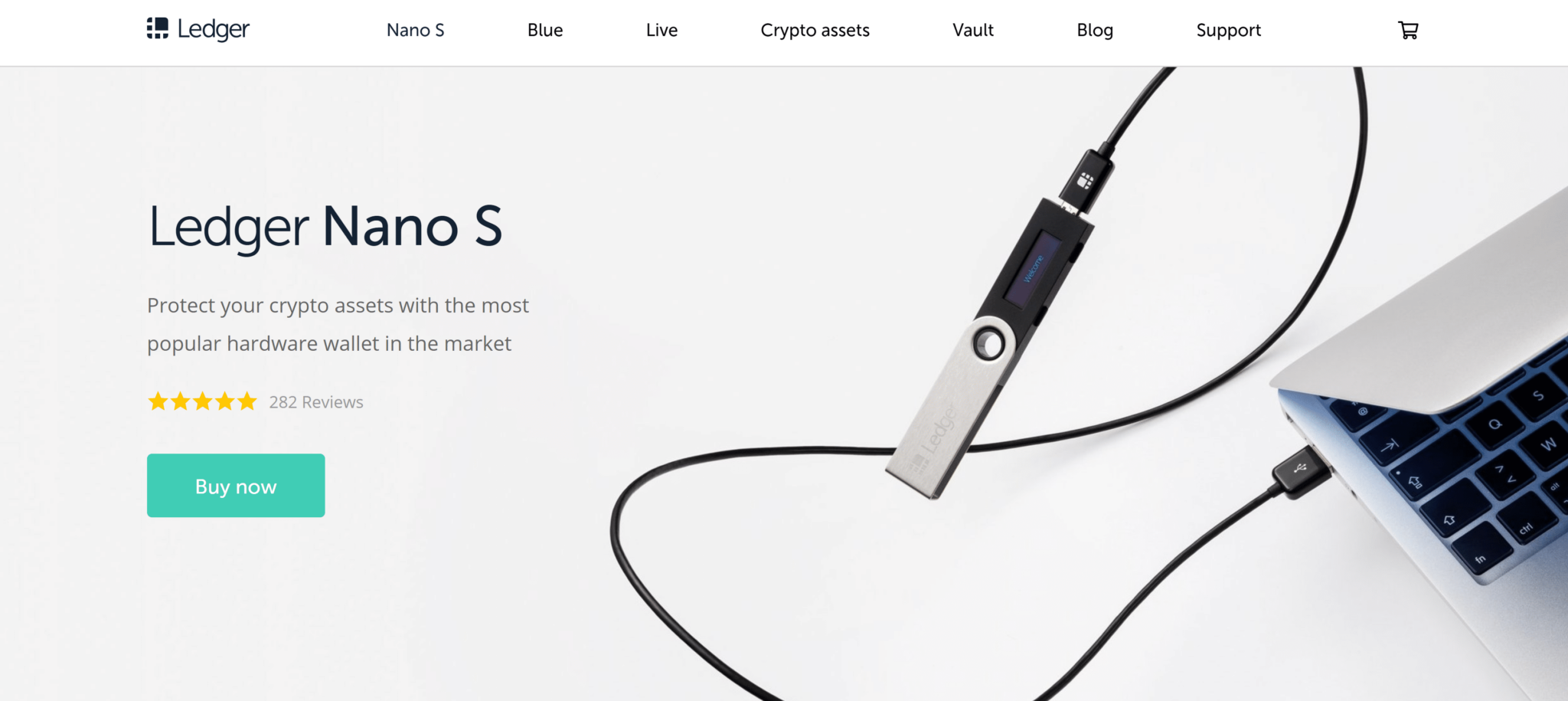With cyber-attacks happening every 39 seconds, you’ve got a good reason to fret about your hard-earned money and investments. In fact, as hackers continue their onslaught, you may long for the days of the physical leather-bound wallet. Bitcoin is great – unless it’s stolen.
But you aren’t out of luck with security options. Other crypto enthusiasts understood the potential security gap early on and developed hardware wallets.
These days, it’s not about when the tech will arrive – but which one to choose. TREZOR and Ledger are leading brands in this arena. But which hardware wallet is best for you?
Crypto Hardware Wallets
Crypto owners have an immense selection when it comes to choosing a wallet. Not only are there web-based options, but there are also desktop, mobile, hardware, and even paper wallets.
The one type of wallet that concerns us in this post is the hardware wallet. Both TREZOR and Ledger fit into this category.

Think of the hardware wallet as a safe. Unlike its software companions, the hardware wallet stores your private keys on a USB drive. In other words, your private key is stored offline. Score one for security!
The only time your money is online is when you have the device plugged in, and you are making a transaction. And even then, these devices contain numerous security protocols to help keep your funds safe.
TREZOR vs Ledger
So what about these two wallets anyway? We’re getting there. To better evaluate TREZOR vs Ledger, we need to look at a few factors: What coins they support, how easy they are to use, compatibilities, extra features, and what users say.
To get a glimpse of everything these brands offer, we’ll be looking at their premium products – TREZOR’s Model T and Ledger’s Nano S.
Let’s start with the basics.
Supported Cryptocurrencies on TREZOR and Ledger Nano S
Your first concern should be whether the hardware wallet supports your chosen coins or tokens. This is probably the biggest difference between TREZOR vs Ledger.
Both support some of the most popular crypto assets–Bitcoin, Ethereum, Litecoin, Dash, and ERC-20 tokens. But TREZOR clearly takes the lead here with support for 689 coins and tokens, compared to Ledger’s 41 (at the time of writing). However, there are a few coins you cannot find on TREZOR: Ripple, Stellar, and Monero are the most popular of those missing.
Features
As you can imagine, security is paramount when it comes to hardware wallets. Each device comes with its list of coin-safeguarding features.
Let’s take TREZOR’s Model T. This wallet is a full-color touchscreen device. It includes three primary features for recovery: A PIN entry, a passphrase entry, and a device recovery. In addition, it provides U2F authentication (2 2-factor authentication), GPG encryption, SSH encryption, a password manager, and support.
The Ledger Nano S has its own set of safety protocols and features. Unlike TREZOR’s Model T, the Nano S isn’t a touchscreen device. Instead, you use buttons to commit to commands. To safeguard your crypto, this device ups the game with a secure PIN-protected chip for your private keys and the use of BOLOs – individual shields around each app on your device. According to the site, this makes the Nano S tamper-proof and incredibly secure.

Both devices are compatible with software wallets, such as MyEtherWallet and MyCrypto–depending on the coin or token. While Ledger lists significantly fewer coins and tokens, and appears to connect to fewer wallets than TREZOR, its Google Chrome companion app provides more features that may be useful.
The Public Speaks
When in doubt, it helps to check what others are saying. However, public sentiment is positive overall for both platforms and devices.
While the Ledger’s Nano S appears slightly low-tech and only allows for 2-4 coins at a time, it makes up for these issues in ease of use and installation. The TREZOR Model T primarily suffers from a higher price point of $170 compared to Ledger’s $120 and may be more time-consuming to set up.
If you’re interested in social proof, TREZOR has been featured in major publications, including Forbes, Coindesk, and CNN.
TREZOR vs Ledger – Who Takes the Cake?
It would be satisfying to have one single winner here – but that’s not possible. Both platforms are secure, compatible with hundreds of coins and tokens, and provide excellent customer support.
Ultimately, the question isn’t which hardware wallet is better – it’s what’s best for you. Double-check if your coins are compatible with either device – then choose based off price point or desired features. While Ledger’s “tamper-proof” device seems appealing, don’t forget the layers of encryption and protocols wrapped up with the TREZOR models.
If you’d like to dive deeper on either wallet, check out our TREZOR review guide and Ledger Nano S review guide.
Never Miss Another Opportunity! Get hand selected news & info from our Crypto Experts so you can make educated, informed decisions that directly affect your crypto profits. Subscribe to CoinCentral free newsletter now.
>>> Read full article>>>
Copyright for syndicated content belongs to the linked Source : CoinCentral – https://coincentral.com/trezor-vs-ledger-which-hardware-wallet-is-right-for-you/?utm_source=rss&utm_medium=rss&utm_campaign=trezor-vs-ledger-which-hardware-wallet-is-right-for-you
































